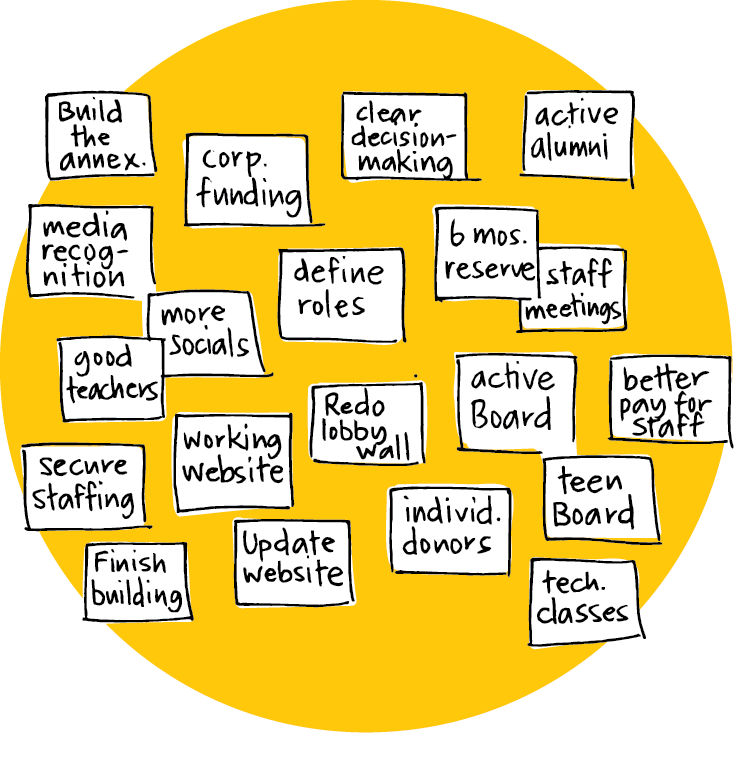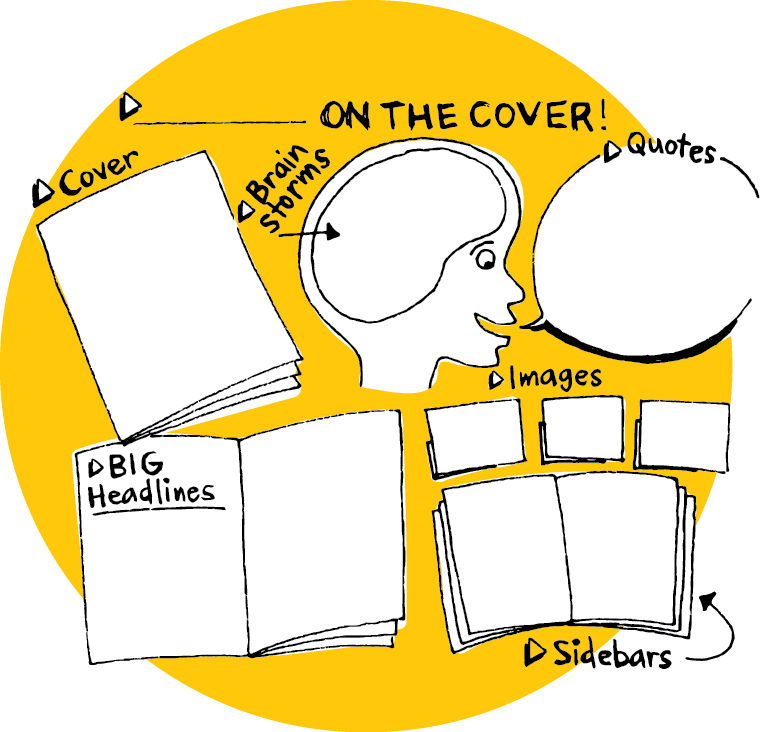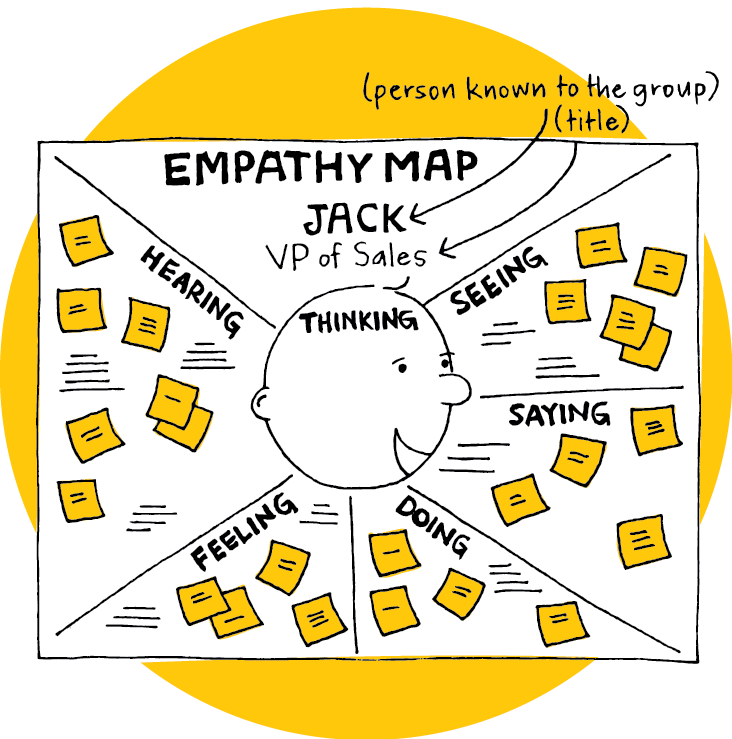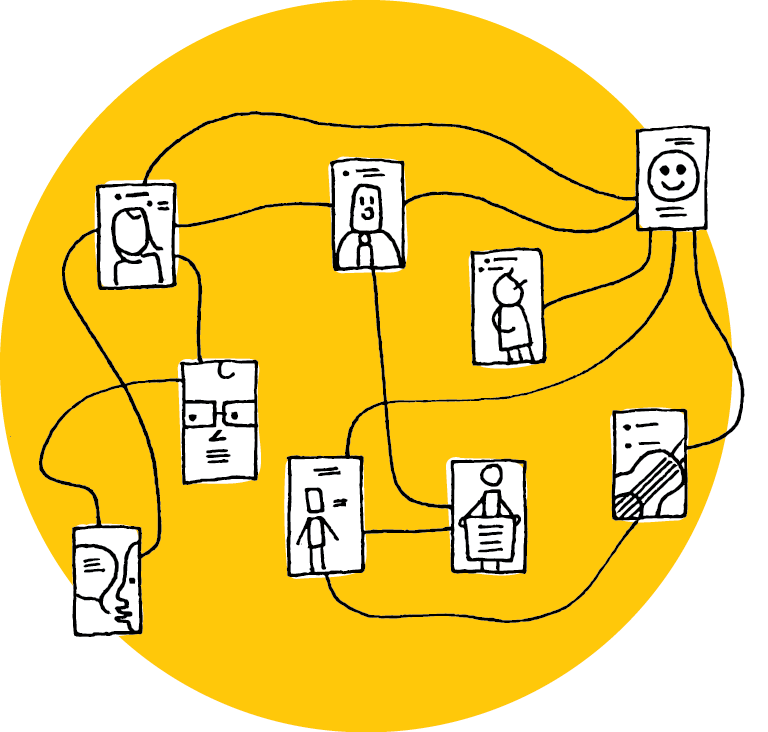The average person spends about one-third of the week in meetings. It will come as little surprise that in a typical group of eight, three people do 70% of the talking.
When meetings are full of a mix of loud extroverts and shy introverts, communication is uneven, and often only the opinions of the loud people get heard.We always say the smartest person in the room is the room because the collective insights of the group are always superior to a few loud voices. How can you foster a culture of collaboration among a group of people with different backgrounds, different comfort levels, and different seniority levels of your org? We’ve gathered four exercises we use in our meetings and sessions (internally at XPLANE and with our clients) to make sure that everyone’s voice is heard equally and the room is as smart as it can be.
 Make brainstorming analog with a Post-Up + Affinity Mapping
Make brainstorming analog with a Post-Up + Affinity Mapping
Whether your meeting is intended to generate ideas on a specific topic or to dive into the challenges of a specific company roadblock, challenge your meeting mates to generate as many ideas as possible in a limited amount of time on sticky notes. This individual work time allows each meeting member to work through multiple ideas. Everyone posts their ideas, so you don’t have to be the most vocal to get your idea across. Affinity mapping then allows all of the ideas to be sorted by categories, so the entire group can focus on the biggest ideas.
Download the Affinity Mapping Activity Card
 Communicate with drawing instead of talking with the Cover Story
Communicate with drawing instead of talking with the Cover Story
Imagine the future of your company is so amazing it landed your team on the cover of a well-known magazine. Drop the logic, think fantastical, look into the future, and envision where you want to be as an organization. Then, draw it. Drawing is an equalizer; it helps level the playing field and gets your team out of talking mode and into doing mode. We call this visual thinking. Thinking visually builds stronger communication between teams because ideas are shared with more clarity and voices are heard evenly.
Download the Cover Story Activity Card
 Understand your team’s emotions with Empathy Mapping
Understand your team’s emotions with Empathy Mapping
Empathy allows you to understand other people and their motivations by immersing yourself in their environment. “Empathy is a competency that allows you to read people. Who is supporting whom? Who is pissed off and who is coasting? Where is the resistance?” says Annie McKee in Harvard Business Review. “Carefully reading people will also help you understand the major, and often hidden, conflicts in the group.” The empathy map breaks down what your co-workers are hearing, saying, thinking, and seeing, so you get a big picture view of each person’s unique perspective equally—even if they don’t feel comfortable speaking up. XPLANE founder Dave Gray developed this exercise.
Download the Empathy Map Activity Card
 Find your common ground with the Low-Tech Social Network
Find your common ground with the Low-Tech Social Network
Commonalities, no matter how small, create compassion and empathy. Finding a common ground between your meeting mates builds trust and enforces cooperation, especially if people don’t know each other very well. Research from London Business School’s Lynda Gratton and author Tamara J. Erickson has even shown that co-workers and teammates collaborate better when they acknowledge similarities. Start to build, showcase, and link the interests, personality traits, and common connections within your team with a physical, drawn Low-Tech Social Network.
